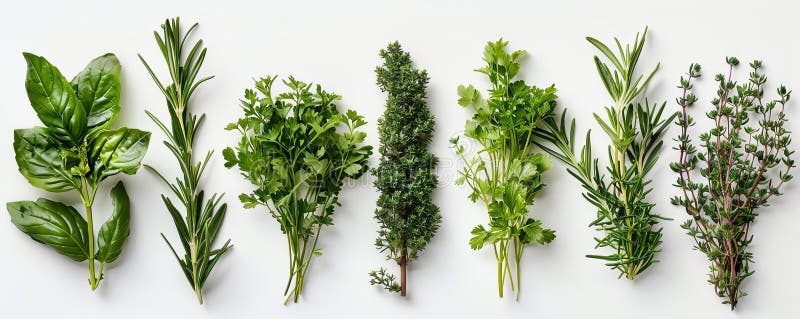Rosemary & Thyme: A Culinary Guide To Herb Gardening And Cooking

Table of Contents
Planting Rosemary & Thyme: A Step-by-Step Guide
Successfully planting rosemary and thyme sets the stage for a bountiful harvest. Understanding their needs is crucial for healthy growth.
Choosing the Right Location
Both rosemary and thyme thrive in sunny locations. Providing them with ample sunlight is key to their vigorous growth and flavorful development.
- Sunshine: Aim for at least 6 hours of direct sunlight per day.
- Soil Drainage: Well-draining soil is essential. These herbs are susceptible to root rot in soggy conditions.
- Climate: Rosemary prefers warmer climates, while thyme is more adaptable but also prefers well-drained soil.
- Varieties: Consider your climate when selecting varieties. There are many rosemary and thyme cultivars suited to various conditions, from creeping thyme for ground cover to upright rosemary varieties for containers.
Starting from Seeds or Cuttings
You can grow rosemary and thyme from seeds or cuttings.
- Seeds: Sowing rosemary and thyme seeds directly into the ground or starting them indoors requires patience. Sow seeds about ¼ inch deep and maintain consistently moist soil. Germination can take several weeks.
- Cuttings: Taking cuttings from established plants is a faster and more reliable method. Simply take 4-6 inch cuttings, remove lower leaves, and dip in rooting hormone before planting in moist potting mix.
Planting in Pots or Directly in the Ground
The choice between containers and in-ground planting depends on your space and preferences.
- Containers: Use well-draining potting mix and select pots with drainage holes. Larger pots (at least 12 inches in diameter) are best for rosemary.
- In-Ground Planting: Prepare the soil by amending it with compost to improve drainage and fertility. Space plants appropriately to allow for growth.
Caring for Your Rosemary & Thyme Plants
Consistent care ensures healthy growth and a plentiful supply of fresh herbs.
Watering and Fertilizing
Proper watering and fertilization are crucial for thriving rosemary and thyme.
- Watering: Avoid overwatering, which can lead to root rot. Water deeply but infrequently, allowing the soil to dry slightly between waterings.
- Fertilizing: These herbs are not heavy feeders. A light application of balanced fertilizer in spring is usually sufficient. Over-fertilizing can lead to leggy growth and reduced flavor.
Pest and Disease Control
Rosemary and thyme are relatively pest-resistant, but occasional problems can arise.
- Common Pests: Aphids and spider mites are occasional culprits. Use insecticidal soap or neem oil to control infestations.
- Disease Prevention: Ensure good air circulation to prevent fungal diseases. Avoid overhead watering.
Pruning and Harvesting
Regular pruning encourages bushier growth and maximizes yield.
- Pruning: Prune rosemary and thyme lightly after flowering to maintain shape and encourage new growth. Harvest stems selectively throughout the growing season.
- Harvesting: Harvest rosemary and thyme by snipping stems just above a leaf node. Harvest frequently to encourage continuous growth. You can dry and store the harvested herbs for later use.
Culinary Uses of Rosemary & Thyme: Recipes and Ideas
The culinary applications of rosemary and thyme are vast and exciting.
Rosemary Recipes
Rosemary's piney aroma complements many dishes.
- Rosemary Roasted Chicken: A classic combination of savory rosemary and tender chicken.
- Rosemary Lamb: Rosemary's robust flavor pairs beautifully with lamb. Try a rosemary-garlic marinade.
- Rosemary Bread: Infuse bread dough with rosemary for an aromatic and flavorful treat.
Thyme Recipes
Thyme's earthy and slightly lemony notes add depth to various dishes.
- Thyme Roasted Vegetables: Thyme enhances the flavor of roasted root vegetables and other seasonal favorites.
- Chicken and Thyme Stew: Thyme adds warmth and complexity to hearty stews.
- Thyme-Infused Olive Oil: Create your own flavorful olive oil by infusing it with fresh thyme sprigs.
Blending Rosemary and Thyme
Combining rosemary and thyme creates unique and complex flavor profiles.
- Herb Blends: Create custom blends for roasts, marinades, and spice rubs, combining rosemary and thyme with other herbs like oregano or sage.
Conclusion
Growing your own Rosemary & Thyme offers a rewarding experience, from the simple act of planting to the delicious culinary creations it inspires. By following these steps, you can easily cultivate these aromatic herbs and enjoy the freshness and superior flavor they bring to your cooking. Start a Rosemary and Thyme herb garden today and experience the culinary delight of homegrown herbs. The sensory experience of using fresh herbs in your dishes, knowing you cultivated them yourself, is truly unparalleled. Grow your own Rosemary & Thyme and savor the taste of success!

Featured Posts
-
 Unattributed Banksy Painting Sale Announcement And Authentication Questions
May 31, 2025
Unattributed Banksy Painting Sale Announcement And Authentication Questions
May 31, 2025 -
 Grossuebung Am Bodensee Katastrophenschutz In Hard Im Ernstfalltest
May 31, 2025
Grossuebung Am Bodensee Katastrophenschutz In Hard Im Ernstfalltest
May 31, 2025 -
 Ryujinx Emulator Development Halted Nintendos Involvement Confirmed
May 31, 2025
Ryujinx Emulator Development Halted Nintendos Involvement Confirmed
May 31, 2025 -
 Rcn And Vet Nursing Collaboration A Plastic Glove Project Case Study
May 31, 2025
Rcn And Vet Nursing Collaboration A Plastic Glove Project Case Study
May 31, 2025 -
 L Etoile De Mer Un Symbole Pour La Reconnaissance Des Droits De La Nature
May 31, 2025
L Etoile De Mer Un Symbole Pour La Reconnaissance Des Droits De La Nature
May 31, 2025
